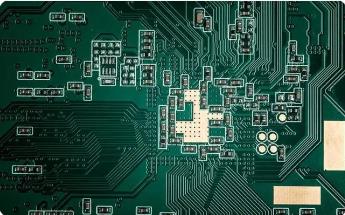Regarding PCB Drill Size, when making electronic devices from scratch; you will eventually have to drill a few holes. Only a few decades ago, everyone used a simple drill to make PCB holes. People move their planks into place, then pull the lever to start drilling. Then they move the board to the next position and repeat the process.
They use whatever drill they have on hand. These drill racks are so large that they can accommodate almost every standard drill bit. Deviations from these standard drill bits will increase the cost.
Over time, the size and complexity of PCB components made traditional drilling methods impossible. Now, we have standard PCB drilling sizes to make the process easier. Do you know what PCBA processing is? These drill bits are well suited for standard automatic CNC machines, enabling efficient and consistent printed circuits.
PCB drilling size.
Today's PCBs often have more than 10,000 holes of different sizes. Although modern automated CNC tools allow you to use any drill size you want without any additional work, the standard drill size makes it a fairly simple process.

To prepare a blank PCB, you need to understand the purpose, structure, and maintainability of the finished product. Not all PCBs are thick enough to handle every drill bit there. It will help if you keep the hole size below the aspect ratio of the board or the ratio between its thickness and the recommended hole size.
For example, a 3 to 1 (3:1) aspect ratio plate is 0.062 inches thick and can withstand a 0.020 inch diameter hole.
In addition to the aspect ratio, the through hole also determines the size of the hole you need. PCB vias (plated vias) come in various shapes and sizes, depending on the complexity of the circuit. You can use laser drilling to make small holes up to 0.006 inches, but most constructions require cutting small "micro vias" from a CNC machine. You also need multiple sizes of drill holes, because if your project must use multiple layers, some through holes will partially pass through.
Therefore, you need a PCB with prefabricated standard PCB drilling sizes, or if you plan to drill yourself, at least some standardized drill bits. This is because everyone will want them.
If you are building a PCB for your customers, your customers will require these standard sizes and specifications so that they can adjust them as needed.
Non-professionals will find the standard size easier to use, giving you the upper hand.
Standard PCB drilling size
Fortunately, PCB manufacturers offer a variety of drill holes and hole sizes available. There are some charges for each used drill size used, but many will provide standard sizes without modification.
Although the above table uses inches as the unit, the PCB standard specification expresses the hole size in millimeters.
Although you can use all of these sizes at the same time, you may not need them in all projects. If you use a bit that is too large, solder and circuit board area will be wasted. If your drill bit is too small, you will not be able to install all the components on the board. You may also encounter other problems, including padding.
The general tip is to make your hole 0.3 millimeters (mm) wider than your component. For example, if your component is 0.4 mm, then you need a drill hole diameter of 0.7 mm.
It will help if you also consider the specifications of the circuit board. For the SSS specification, the number of holes on the circuit board must not exceed 500. The maximum DSS is 2000 holes.
Printed circuit board design
These specifications are at the core of good PCB design. They provide the thinness and standard components you should use for your project. However, they are only one aspect of good PCB design.
Whether you make them in a home technology laboratory or in a professional environment, PCB design starts with a good schematic and then starts from there.
PCB packaging defines the physical presence of components on the circuit board. It also sets up where you must place copper pads or vias.
The purpose of a component is its effect on the entire project. You can place components with related uses in the same area to reduce the length of the trace. Then, you should place these zone groups as linearly as possible to create a direct path flow from one section to the next.
Once you figure out your components and their footprints, you can complete your diagram with all symbolic wires and labels. You will eventually copy these labels to the corresponding locations on the board. So, you want to make them easy to understand and read.
PCBs come in various shapes and sizes, but in most cases, you want them to be as small as possible. In addition to component packaging, other factors may also affect the size you need.
If you place the PCB in an enclosure, the enclosure may define its dimensions.
You can also consider the physical depth of the component. For example, while surface mount components are usually small, through-hole components tend to be large, but they are usually easier to solder.
Since your circuit board may also require multiple user interfaces, such as power connections, potentiometers, LEDs, and audio jacks, your circuit board must be large enough and thick enough to hold them in place.